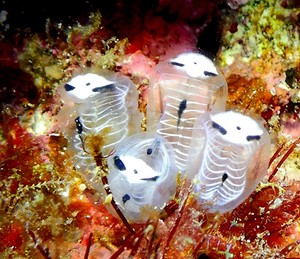By RIKURI KURODA/ Staff Writer
February 17, 2023 at 17:32 JST
 Special teaching material used in the third grade at all Hiroshima municipal elementary schools includes excerpts from the "Barefoot Gen" manga series. (Rikuri Kuroda)
Special teaching material used in the third grade at all Hiroshima municipal elementary schools includes excerpts from the "Barefoot Gen" manga series. (Rikuri Kuroda)
HIROSHIMA—Hiroshima’s municipal board of education has decided to remove from its special teaching materials some parts of a famous manga series depicting the atomic bombing of Hiroshima.
“Hadashi no Gen” (Barefoot Gen) by Keiji Nakazawa (1939-2012) was first published in Japanese in 1973, based loosely on the creator’s own experience in the aftermath of the atomic bombing of Hiroshima on Aug. 6, 1945.
But while it has received wide praise, officials said they determined some parts of the story might be lost on kids today. Those will be replaced with testimony from a woman who lost family members in the atomic bombing.
“We created new teaching material with the hope that children will think about what it is they can do,” a city board of education official said. “It is not meant to deny the significance of Barefoot Gen.”
Nakazawa let it be known that he wanted the manga series to be translated into as many foreign languages as possible so children around the world could learn about what unfolded in Hiroshima. It has now been translated into about 20.
Ironically, the graphic depictions in the manga have led some school libraries in Japan to pull the volumes from their shelves.
But apparently some of its other parts now feel a bit dated.
Until now, the special teaching materials used in the third grade used parts of the manga showing Gen singing “rokyoku,” a traditional performing art, to earn money to help his family, as well as him fishing for carp in a neighbor’s pond.
Education experts decided that today’s children may not be familiar with rokyoku and they may get the wrong idea about the depiction of him stealing his neighbor’s carp, sources said.
The manga is included in the Hiroshima municipal board of education’s “peace education” curriculum, which it has long placed importance on to ensure students understand the gravity of the atrocity committed there in the waning days of World War II.
Since the 2013 school year, the board of education has published the textbook, called “Hiroshima Peace Note,” for use in municipal schools from grade one to the third year of senior high school, and each grade spends three hours a year on the peace education project.
But since 2019, teachers and university professors have met to discuss whether the teaching material for the unit should be revised.
They considered four main points, including whether the content allowed students to understand what actually happened in Hiroshima so they can pass on that knowledge. They also mulled whether the content was appropriate for students at different stages of development.
They concluded some parts of “Barefoot Gen” used in the teaching material for the third grade and first year of senior high school should be replaced with other material.
Changes were made to 26 of the 36 units in the special material to be used from the 2023 school year. It will be taught for all 12 grades covering elementary to senior high school.
The parts from the manga to be removed will be replaced for the third grade with the testimony of a daughter talking about her mother who lost her parents and younger sister because of the atomic bombing when she was 16.
The material for the first year of senior high school will replace parts from the manga with written testimony left behind by Nakazawa as well as a summary introducing the manga.




















Stories about memories of cherry blossoms solicited from readers
Cooking experts, chefs and others involved in the field of food introduce their special recipes intertwined with their paths in life.
A series based on diplomatic documents declassified by Japan’s Foreign Ministry
A series on the death of a Japanese woman that sparked a debate about criminal justice policy in the United States
A series about Japanese-Americans and their memories of World War II
Here is a collection of first-hand accounts by “hibakusha” atomic bomb survivors.